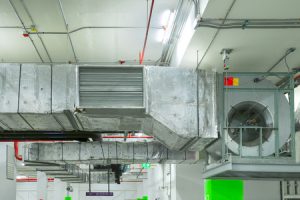
It’s time to take a simple look at industrial fans, so this is a brief overview of their basics and why they matter.
How the Blades Turn
Industrial fans are put in place in order to provide a large flow of air (or gas) to certain processes. Fans typically direct air or gas through a rotation of blades connected to a hub or shaft. The blades turn thanks to a powered motor.
Centrifugal or Axial
As for the flow or air or gas, uses include combustion, ventilation, exhaust and particle transport. Whether operating in a clockwise or counterclockwise orientation, industrial fans can be centrifugal or axial. Centrifugal fans have blades mounted at right angles to the rotating disk, and the centrifugal fan wheel (along with the blades) helps move air/gas and increase its pressure thanks to centrifugal force. Axial fans, on the other hand, use axial forces to get the air or gas to move. Using a propeller, an axial fan will spin a central hub with blades extending radially from its outer diameter. These types of fans work well where the principal requirement is for a large volume of flow.
Subset Designs
Now that you know some basics, did you know there are subset designs of industrial fans, able to meet the needs of your specific process(es)? Whether it’s backward-inclined, shrouded radial, paddle wheel, tube axial or whatever, there are numerous designs to meet your needs.
For more info about industrial fans, call Dynamic Fan of Pine Brook, New Jersey, at 973-244-2422. To find out more info about centrifugal fans, visit this page. And if you’re interested in ventilation/extractor fans, here’s a good page to view. Got questions? Use the online contact form available here. Dynamic Fan is located in New Jersey, but also serves the Greater New York City region as well as Scranton, PA.
